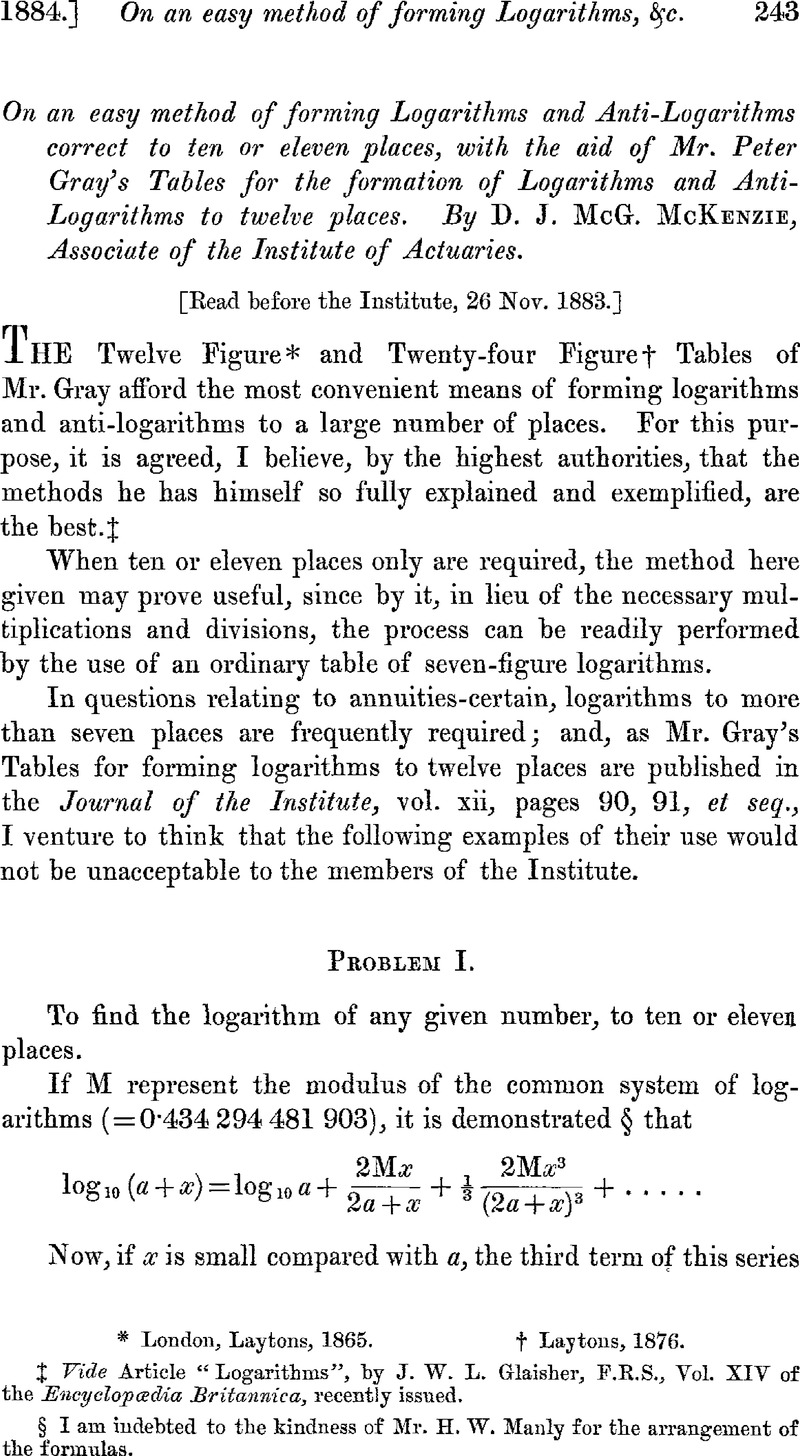No CrossRef data available.
Article contents
On an easy method of forming Logarithms and Anti-Logarithms correct to ten or eleven places, with the aid of Mr. Peter Gray's tables for the formation of Logarithms and Anti-Logarithms to twelve places
Published online by Cambridge University Press: 18 August 2016
Abstract

- Type
- Other
- Information
- Copyright
- Copyright © Institute and Faculty of Actuaries 1884
References
page 243 note * London, Laytons, 1865.
page 243 note † Laytons, 1876.
page 243 note ‡ Vide Article “Logarithms”, by J. W. L. Glaisher, F.R.S., Vol. XIV of the Encyclopædia Britannica, recently issued.
page 243 note § I am indebted to the kindness of Mr. H. W. Manly for the arrangement of the formulas.
page 250 note * Given in “Tables de logarithmes a cinq décimates, pour les noinbres ei les lignes trigonométrioues, suivies des logarithmes d'addition et de soustraction, on logarithmes de Gauss, et de diverses Tables usnelles”, Paris, 1858.
page 250 note † “Méthode nouvelle pour calculer rapidement les logarithmes des nombres et pour trouver les nombres correspondant aux logarithmes; précédées d'un Rapport fait à l'Académie des Sciences”. Par M. Philippe Koralek. Paris, 1851. A succinct account of Koralek's method may be seen in Galbraith, and Haughton's, Manual of Algebra (3rd Edition, London, 1867), pp. 379–386 Google Scholar.




